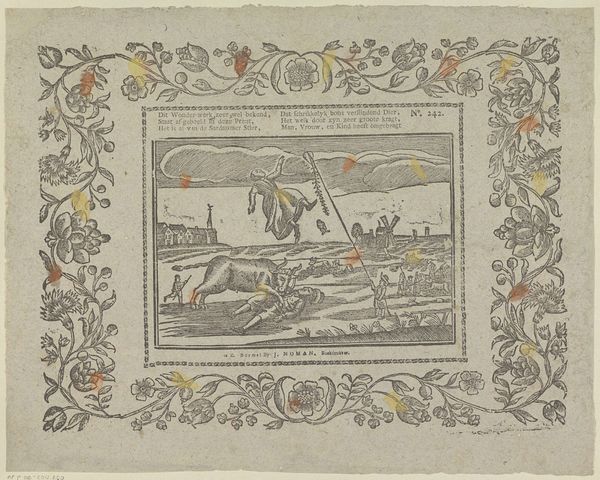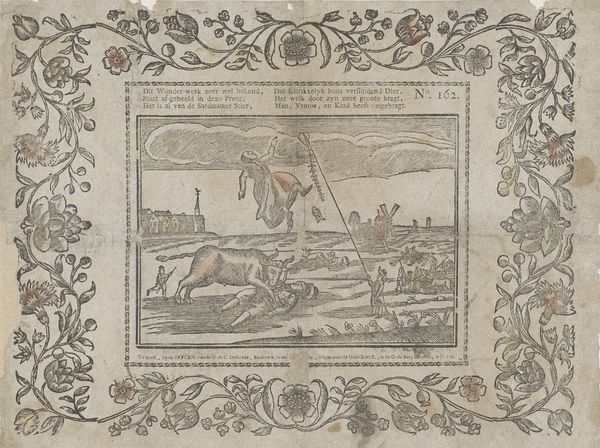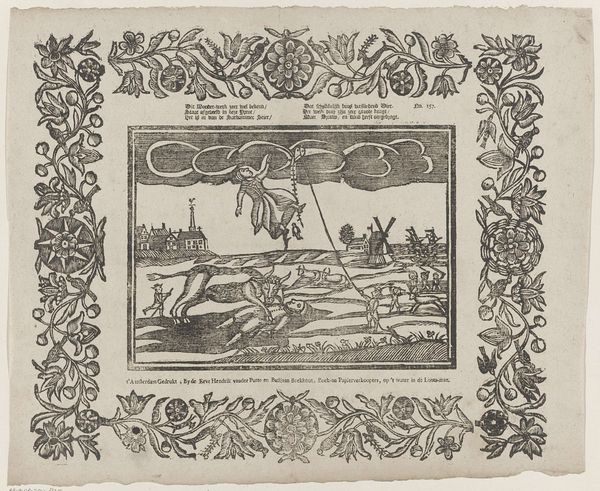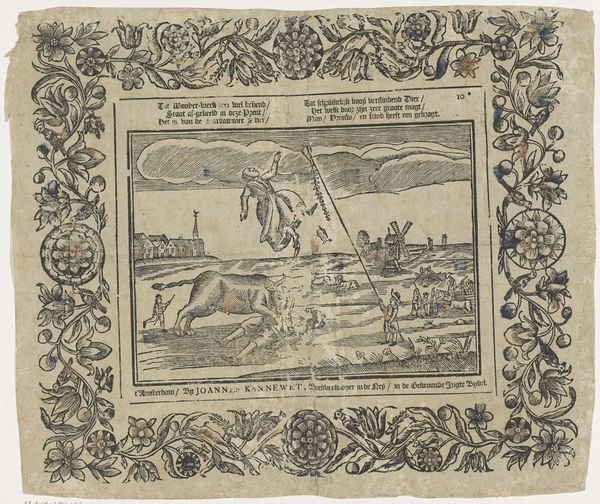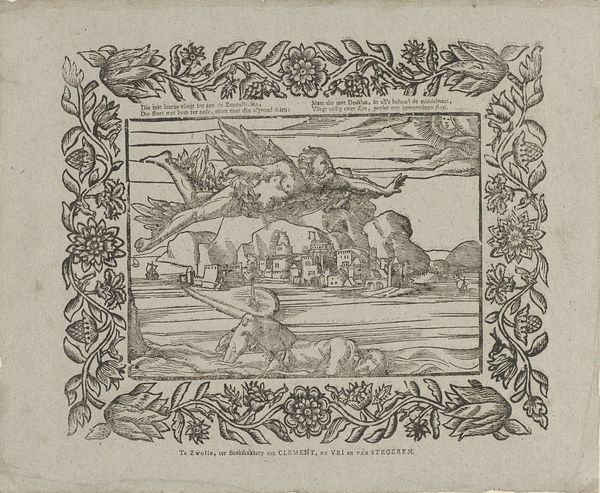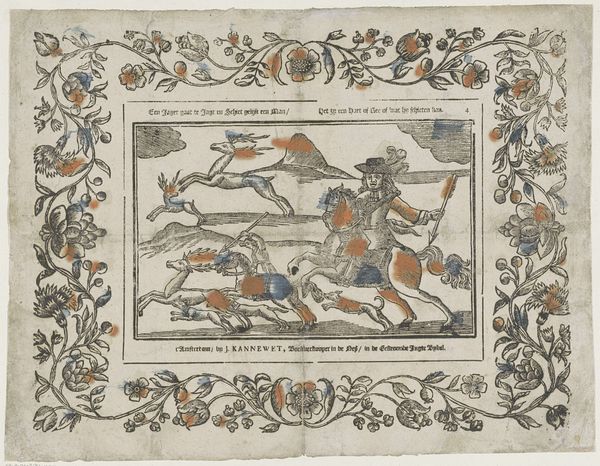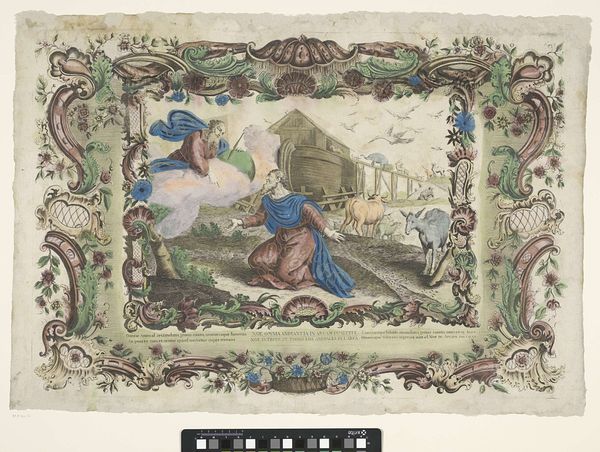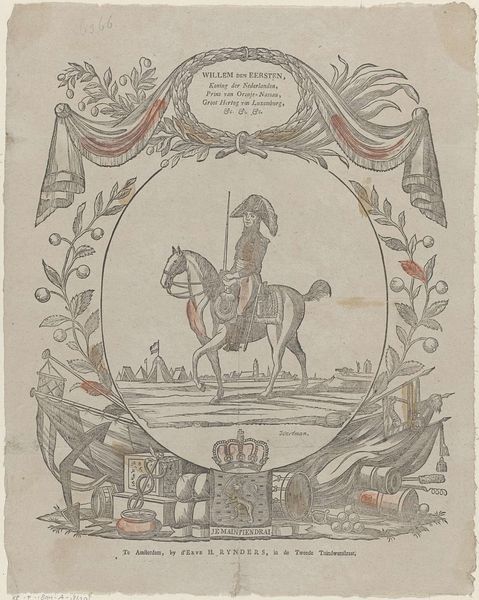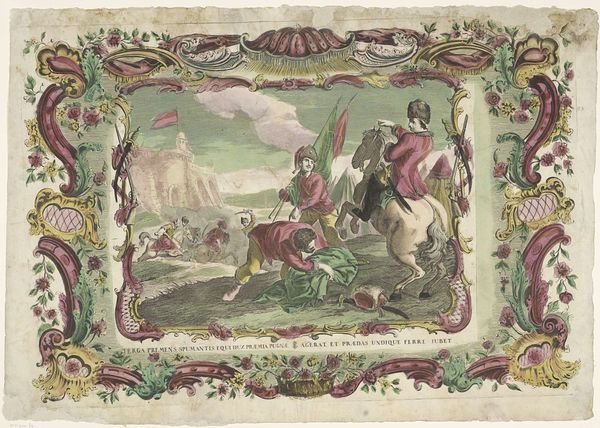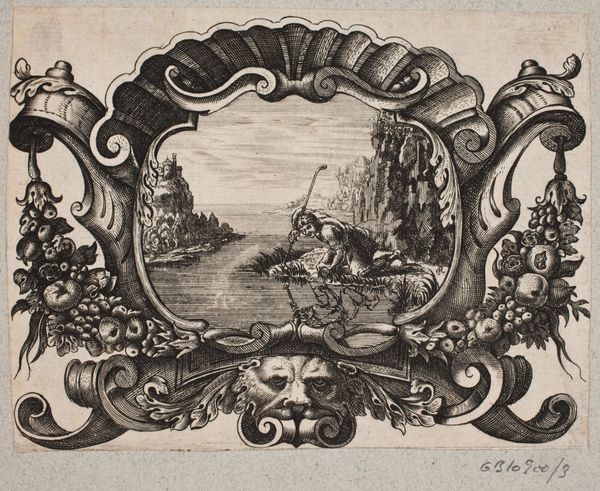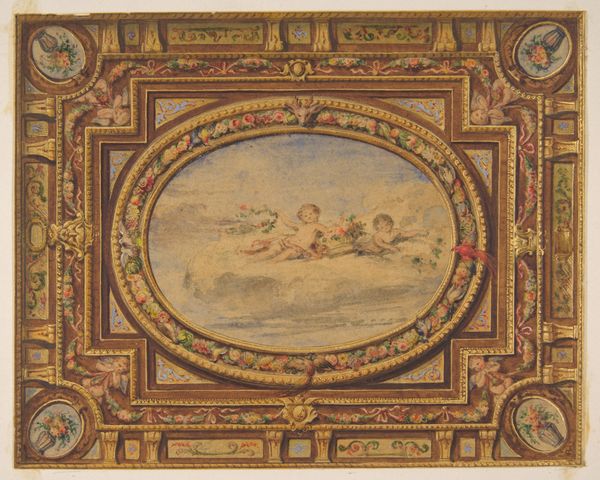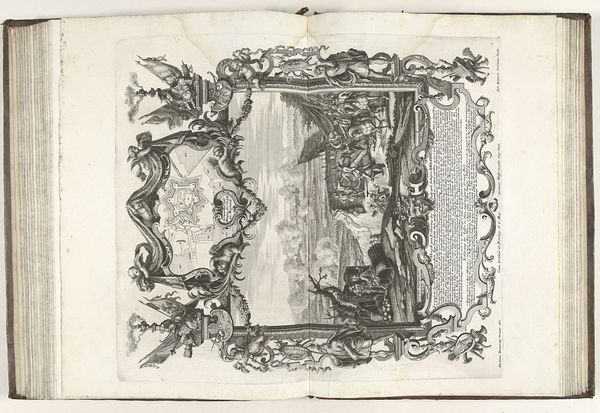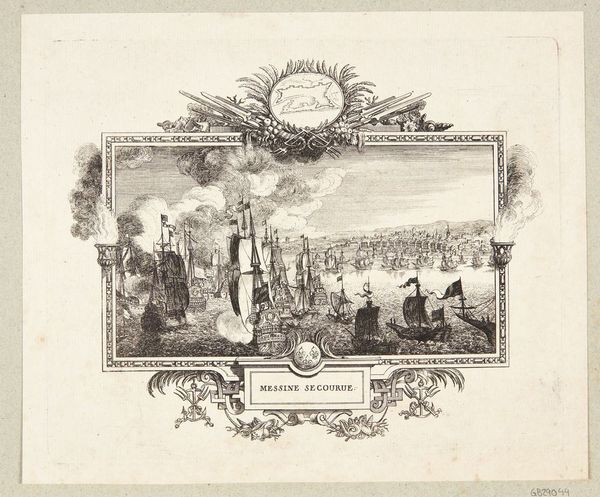![Dit wonder-werk zeer wel bekend / Staat af-gebeeld in deze prent [(...)] by Erven Hendrik van der Putte](/_next/image?url=https%3A%2F%2Fd2w8kbdekdi1gv.cloudfront.net%2FeyJidWNrZXQiOiAiYXJ0ZXJhLWltYWdlcy1idWNrZXQiLCAia2V5IjogImFydHdvcmtzLzI0NTEyNTZlLTYzMTQtNDQ1ZC1hMWNkLTQ3Y2U0NjAzZTllNi8yNDUxMjU2ZS02MzE0LTQ0NWQtYTFjZC00N2NlNDYwM2U5ZTZfZnVsbC5qcGciLCAiZWRpdHMiOiB7InJlc2l6ZSI6IHsid2lkdGgiOiAxOTIwLCAiaGVpZ2h0IjogMTkyMCwgImZpdCI6ICJpbnNpZGUifX19&w=3840&q=75)
Dit wonder-werk zeer wel bekend / Staat af-gebeeld in deze prent [(...)] 1767 - 1793
0:00
0:00
ervenhendrikvanderputte
Rijksmuseum
Dimensions: height 325 mm, width 403 mm
Copyright: Rijks Museum: Open Domain
Curator: Welcome. Before us is an engraving attributed to Erven Hendrik van der Putte, crafted between 1767 and 1793. Its elaborate title, "Dit wonder-werk zeer wel bekend / Staat af-gebeeld in deze prent [(...)]", already hints at the extraordinary scene it depicts. Editor: It strikes me as immediately unsettling. There's violence here, but rendered with such precision, such calculated composition, it almost feels... staged. The use of line is so pronounced; it's like looking at a meticulously planned diagram of chaos. Curator: Indeed. The stark linearity, a hallmark of engraving, serves to heighten the dramatic tension. Note how the foreground action, the bull and fallen figure, is juxtaposed against the receding landscape, a classic Baroque device. The floral border, although decorative, further frames the central narrative, forcing our focus inward. Editor: Precisely! The placement feels purposeful, highlighting a narrative – or genre-painting tradition. However, from an historical viewpoint, broadside ballads with similar designs were meant to act as a sort of proto-news medium: cheap, easily available commentary on local or world events. The floral borders almost humanize what is a decidedly non-harmonious and savage occurrence. How interesting that an owner thought this worthy enough to collect. Curator: The use of symbolism here cannot be ignored. What seems like random, savage occurrences of violence were highly allegorical for the common people, for instance: bulls often represented brutish power and aggression. Its positioning in relation to the prone man suggests a societal hierarchy turned violent or upside down. Moreover, we shouldn't overlook the potential political dimensions, particularly when contextualized by events in the late 18th century, where agrarian populations often dealt with very real issues. Editor: True, but focusing strictly on visual qualities, there is almost no "focal point" created in this piece. Is this intentional? To me it makes the events even more sinister to suggest, even through art, the chaos of real events or a toppling order are this unnerving, unpredictable and without "main characters". Curator: Perhaps a statement on the chaotic times in general, I wonder… Well, considering these varied levels of social context along with the structural artistic forms in the piece only enhances our modern perception of it. Thank you for shedding further light. Editor: My pleasure. Analyzing a visual work by approaching its context can further contextualize our engagement as we grapple with the present day, just as it did for viewers hundreds of years ago.
Comments
No comments
Be the first to comment and join the conversation on the ultimate creative platform.
